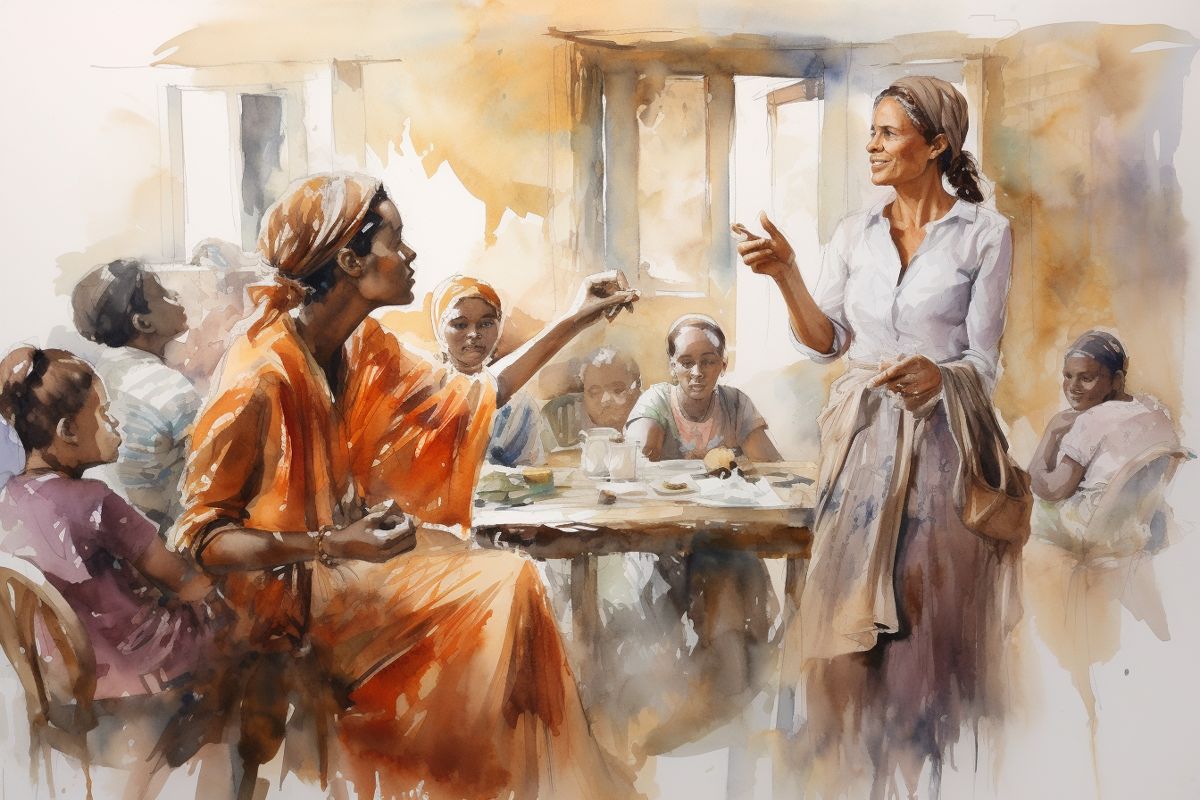An A+Award-winning architectural project, such as the Komera Leadership Centre by BE_Design, is characterized by its compelling narrative, the intersection of form and function, a cultural sustainability approach, attention to cost, and the right lens through which it is presented. The Komera Leadership Centre in Rwinkwavu, Rwanda, exemplifies these key components by addressing social challenges, accommodating various activities, using local materials to celebrate the region’s culture, considering cost and local resources, and showcasing the project through thoughtfully chosen photographs. By understanding and incorporating these elements, architects can strive for an A+Award-winning submission.
What are the key components of an A+Award-winning architectural project?
An A+Award-winning architectural project, such as the Komera Leadership Centre by BE_Design, focuses on several key aspects:
- Telling a Compelling Narrative: Highlight the environmental impact, social context, and post-occupancy outcomes of your project.
- Intersection of Form and Function: The design should accommodate various activities and harmoniously blend interior and exterior, public and private spaces.
- Cultural Sustainability Approach: Consider the cultural connotations of design decisions and use local materials that celebrate the region’s culture.
- Pay Attention to Cost: Be mindful of local resources and the financial cost of architecture.
- Look through the Right Lens: Present your project thoughtfully, using drawings, renderings, and photographs that strategically highlight different aspects of the project.
The 12th Annual A+Awards are officially here, and for those starting to work on their entries, we’re here to provide a detailed insight into the intricacies of a prize-winning architectural project. Our case study is the Komera Leadership Centre by BE_Design, a project so exceptional, it garnered SIX different merits in FIVE categories at the 11th Annual A+Awards. A true masterclass on how to excel at the A+Awards, this project demonstrates the power of architecture that supports and uplifts a community.
A Peek at a Masterpiece
The Komera Leadership Centre isn’t just a striking architectural work; it’s a testament to a potent social ethos. The design, construction, and purpose of the community center resonated with our globally diverse jury and the voting public alike. Exploring the key elements that contributed to the Centre’s success will not only inspire you but also guide you as you consider which project to enter for this year’s A+Awards competition.
1. Telling a Compelling Narrative
Tucked away in the rural eastern province, the Komera Leadership Center is an innovative community hub in Rwinkwavu. This center, built on the edge of a humble dirt road hours away from the nearest city, has turned its focus towards the rural community, recognizing and addressing the social challenges present within it.
The centre’s location is no accident; it’s a strategic choice that underscores its commitment to fostering education, community development, and health and wellbeing for young women. The name ‘Komera,’ a Rwandan term that means ‘be strong, have courage,’ encapsulates the ethos of the center.
BE_Design’s iconic design serves as a physical manifestation of this ethos, providing a space for teaching and community activities. More than that, it’s a landmark promoting equal gender rights in education, tying into a broader country-wide initiative.
The story of Komera’s design intertwines complex social and environmental considerations with architectural aesthetics. As you prepare your entry, make sure to highlight the environmental impact, social context, and the post-occupancy outcomes of your project. After all, a building’s purpose extends beyond its physical existence; it should improve its surroundings rather than merely blend into them.
2. Focus on the Intersection of Form and Function
The Komera Leadership Centre is a beacon of versatile design, housing numerous functions to accommodate a variety of activities and programs. The primary, central space is a flexible area designed to adapt to the requirements of various events.
Its exterior shell unfolds beautifully across the landscape, with triangular volumes reflecting the multifunctionality and cultural diversity within. At the same time, it remains fully integrated with the surrounding agricultural landscape. The centre displays an architectural language filled with rigid geometric forms and matching openings, which alternate harmoniously between interior and exterior, public and private spaces.
Communicating such intricate design in an A+Awards entry can be challenging. Therefore, architects shouldn’t hold back from sharing drawings like floor plans, axonometrics, or elevations, in addition to compelling photos.
3. Adopt a Cultural Sustainability Approach
Notwithstanding the obvious need to pay close attention to material selection, a successful architecture project also has to consider the cultural connotations of its design decisions. BE_Design have excelled in this regard, taking advantage of Rwanda’s ample types of local materials and assembling them in a way that celebrates the country’s artistic culture.
The roof forms, woven eucalyptus screens, and brick patterns in the Komera Leadership Centre are all inspired by the traditional “Imigongo” art deeply associated with the region. This art form, which nearly vanished following the country’s genocide, is now a symbol of resilience and resourcefulness.
4. Pay Attention to Cost
Creating a landmark for social impact doesn’t always imply high-cost construction. BE_Design’s proposal was mindful of the local resources available, and their choice of materials reflected this. They also viewed the construction process as an educational opportunity, employing a local team and providing on-site training, fair wages, and marketable construction skills.
The A+Awards recognize the social and financial cost of architecture as integral aspects of a building’s existence. Sharing these details with the judges can enhance the evaluation of your design.
5. Look through the Right Lens
How your project is presented to the world can greatly affect its success. Drawings and renderings play a vital role in communicating design ideas, but photographs are equally crucial. The portfolio of images should not only be visually stunning but also strategically highlight different aspects of the project.
The Komera Leadership Centre’s primary message is its contribution to the village community in Rwinkwavu. Therefore, the chosen photographs are filled with people and showcase how the Centre is used. They equally highlight both the interior and exterior, placing the Centre within its extraordinary context and showing its connection with the surrounding landscape.
Armed with these insights for an A+Award-winning project, you’re ready to participate. Submit your best new projects to the 12th Annual A+Awards for a chance at worldwide recognition and international publication.
Let’s start your journey towards an A+Award today!
- An A+Award-winning architectural project focuses on various key components: telling a compelling narrative, the intersection of form and function, a cultural sustainability approach, attention to cost, and the right lens through which it is presented.
- The Komera Leadership Centre by BE_Design exemplifies these key components through addressing social challenges, accommodating various activities, using local materials to celebrate the region’s culture, considering cost and local resources, and showcasing the project through thoughtfully chosen photographs.
- Architects striving for an A+Award-winning submission should aim to highlight the environmental impact, social context, and post-occupancy outcomes of their projects, accommodate various activities and harmoniously blend interior and exterior spaces, consider the cultural connotations of design decisions and use local materials, be mindful of cost and local resources, and present their projects with strategic photographs that showcase different aspects of the project.

